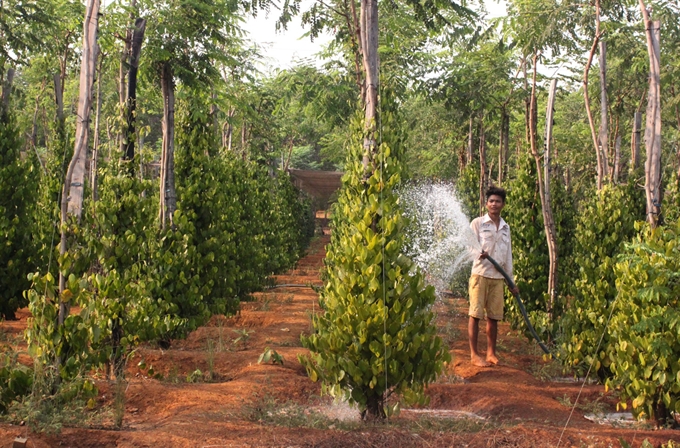 Society
Society

The Prime Minister has approved the contents of a project worth over US$122 million to support the development of border areas in five Central Highlands provinces.
 |
| A farmer in Bù Đốp District, Bình Phước Province irrigates his pepper plants. Bình Phước is among six provinces to benefit from the “Support to Border Areas Development Project” funded by the Asian Development Bank .— VNA/VNS Photo |
HÀ NỘI – Prime Minister Nguyễn Xuân Phúc approved the contents of a project worth US$122 million to support the development of border areas in five Central Highlands provinces.
The “Support to Border Areas Development Project” funded by the Asian Development Bank will be carried out for six years in five provinces of Kon Tum, Gia Lai, Đắk Lắk, Đắk Nông and Bình Phước, which are included in the Cambodia-Laos-Việt Nam Development Triangle Area (CLV-DTA).
The project will support CLV-DTA objectives in Việt Nam by improving critical transport infrastructure to increase connectivity to areas of high economic productive potential with domestic and international markets. It will enable the efficient provision of services and the movement of goods and people.
Its long-term goal is to tap the potential of five provinces, making them a fast-growing, dynamic economic hub.
In the foreseeable future, the project is expected to improve incomes, especially those of ethnic minorities, facilitate farm produce’s access to domestic and foreign markets, and improve the capacity of planning and inter-provincial co-ordination. Under the project, a road corridor will be built to facilitate sub-regional integration and growth and raise farmers and entrepreneurs’ capacity to tap their strength in agricultural production and trade. Moreover, the project will allocate resources by rallying the involvement of the private sector in the country, the region and the world toward promoting the progress of the CLV development triangle.
The CLV-DTA was established in 1999 and is located at the junction of Cambodia, Lao and Việt Nam. It covers 13 provinces in the neighbouring countries. The CLV-DTA aims to boost infrastructure connectivity within the three countries; explore their potential in industries such as agriculture, forestry and tourism; build human resources’ capacity; and facilitate the flow of goods, people and investment capital. -- VNS




